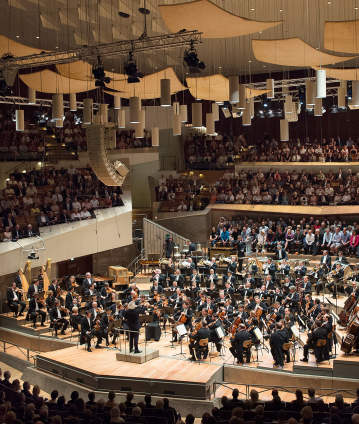Interview
Sir Simon Rattle à propos de la Septième de Mahler Ouverture de la saison 2016 : Simon Rattle dirige la Septième de Mahler

Un « concert fulminant qui vous électrise comme un coup de timbale » – c’est ainsi que la presse a qualifié cette lecture de la Symphonie n° 7 de Mahler avec laquelle Simon Rattle a ouvert la saison 2016-2017. Si l’œuvre est, selon les propres mots du compositeur, « de caractère essentiellement serein », son optimisme demeure fragile, ambigu, sans cesse menacé par l’abîme sous-jacent. En début de soirée, vous entendez Éclat de Pierre Boulez, une œuvre très concentrée et riche de sonorités raffinées.
Berliner Philharmoniker
Sir Simon Rattle
© 2016 Berlin Phil Media GmbH
Interviews liées au concert
Interview
Bienvenue à la saison 2016-2017 ! Artistes
Nos suggestions
- Simon Rattle dirige la Sixième de Mahler
- Une soirée Brahms avec Sir Simon Rattle et Lars Vogt
- Simon Rattle dirige la « Symphonie des Mille » de Mahler
- Europakonzert 2005 à Budapest avec Simon Rattle et Leonidas Kavakos
- Europakonzert 2008 à Moscou avec Simon Rattle et Vadim Repin
- Les Concertos pour piano n° 2 et 3 de Beethoven avec Mitsuko Uchida et Simon Rattle